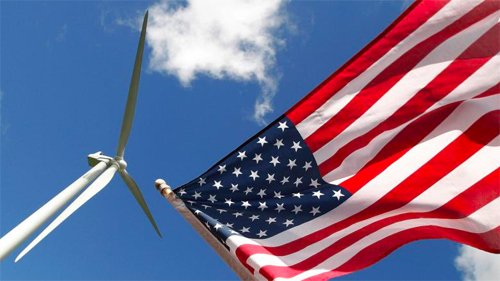Wind power surpassed solar and natural gas in 2020. American wind turbines are getting bigger, more efficient, and are increasingly important to the grid.
The US installed a record 16,836 megawatts of wind capacity in 2021, as detailed in the 2021 Land-Based Wind Market Report, published Monday by the Office of Energy Efficiency and Renewable Energy.
In doing so, wind surpassed solar capacity additions for the first time, despite solar having a “record-breaking year” for new additions. Both wind and solar exceeded any other power source for new capacity, beating out natural gas capacity additions, which fell to a five-year low. In the southwest, new wind turbines represented nearly 80 percent of new energy additions.
What this means is that we’re building more turbines, and bigger ones, for less money—in both standalone farms and in hybrid facilities that combine wind power with fossil fuel, solar, and battery storage (there were 38 hybrid plants at the end of 2020, the report notes). Average rotor size has increased 159 percent from the late 90s to 408 feet, while average turbine height has grown 59 percent to 295 feet in the same timeframe, and the country is now home to more than 67,000 turbines in total. They’re the cheapest they’ve ever been to produce, costing around $800 per kilowatt, down from $1800 per kilowatt in 2008, even as their performance has improved.
The US ranked second (after China) in annual and cumulative wind power capacity additions in 2020, a result of nearly $25 billion in investments in the form of tax incentives, research and development, and growth in manufacturing and operations and maintenance facilities.
This investment has proven fruitful, not just in bringing the country closer to achieving renewable energy goals state and federal governments have laid out, but in reducing the burdens of our collective reliance on fossil fuels. Nationally, the health and climate benefits of wind are worth $76 per megawatt-hour, the report asserts, as every unit of wind generated reduces the need for the same unit of a polluting energy source (recent research has attributed air pollution from fossil fuels to nearly 20 percent of deaths worldwide).
“Wind reduces emissions of carbon dioxide, nitrogen oxides, and sulfur dioxide, providing public health and climate benefits,” the report reads. The financial benefits of reducing these emissions are worth almost three times the cost of producing wind energy, the report notes.
Land-locked states in the center of the country stand to gain the most from building out land-based wind technology, the report says (crucially, this report does not include statistics on offshore wind technology, which coastal states like New York are building out, and which represent a potentially substantial source of energy). Wind provides more than 30 percent of total electricity in Iowa, Kansas, Oklahoma in the Dakotas, home to some of the fastest breezes in the nation. Texas installed the most wind power capacity in the country in 2020 (even as right-wing commentators alleged that frozen turbines caused its catastrophic February grid failures, a claim that was quickly debunked).
But wind still generates less than 10 percent of the country’s total power generation, a rate that pales in comparison to the near 50 percent that countries like Denmark, Ireland and Germany are nearing as they build out their renewable technologies. The U.S. is still dependent on fossil fuel power to keep the lights on: Petroleum, coal and natural gas continue to dominate U.S. grids. This year was a crucial one for changing this reality, the DOE’s report shows—but there’s still a long way to go.


